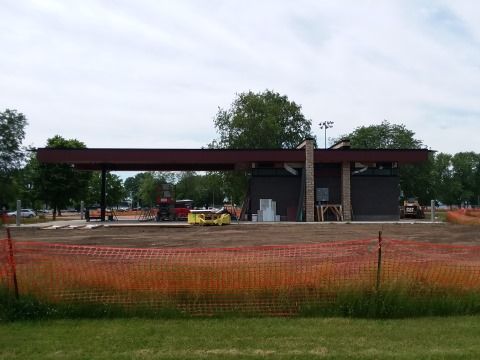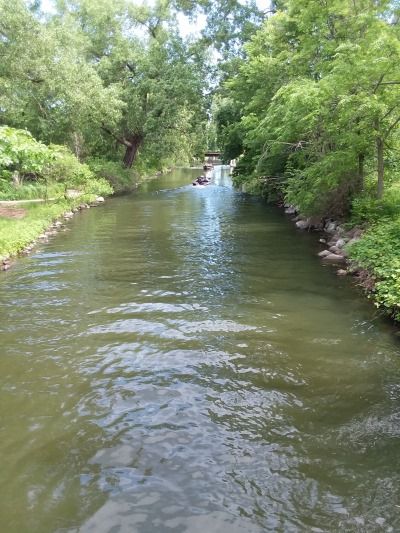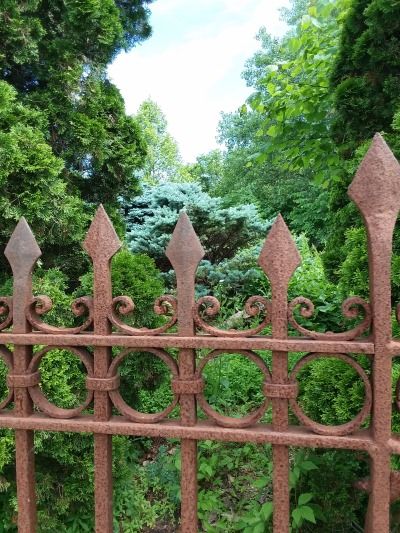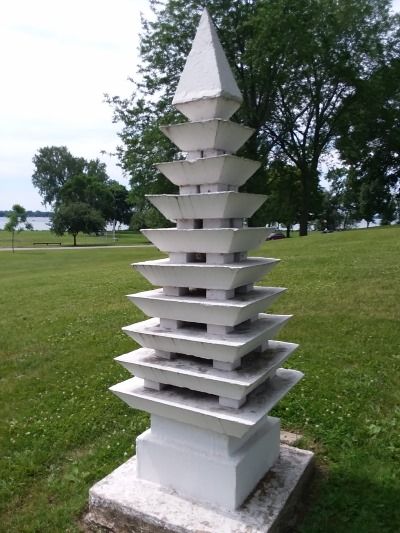WARNING! Tangent (no pun intended) ahead.
There were three albums that I was keen on adding to my collection. First there was Adrian Belew's Pop-Sided which I'd only heard of the day before. I am falling behind on new stuff by proggy legends. 3 Feet High and Rising by De La Soul came next in line because I had heard a bit of "Jenifa Taught Me (Derwin's Revenge)" the week before and realized I should probably have that album in my collection. Lastly and most covetously was Terry Riley's A Rainbow in Curved Air.
I'm sure that I first heard of A Rainbow in Curved Air, like many fans of The Who, in reference to its influence on Pete Townshend in 1970 when he was composing the tunes for Who's Next. After all, the "Riley" in "Baba O'Riley" is Terry. I've known about the influence of the avant-garde composer/musician and his electronic minimalist album for years, decades really. But having read about it while in high school, I assumed it was an obscure bit of experimentalism known only to the select few initiates of the Cult of Riley. Presumably Pete Townshend had found a rare copy while on tour at a Brigadoon-like record store in New York or Chicago that only appeared to customers on nights when the moon was full between the summer and winter solstices. I mentally filed it away as an album to listen to someday, if it could ever be found.
That was some time in the second half of the 1980s. Along comes the Internet making much obscure music available and even for free in most cases. But it didn't occur to me to scour YouTube for it until a few months ago while I was in media res of a The Who binge. I was listening to some of Pete Townshend's demos, specifically the one for "Baba O'Riley", when it suddenly occurred to me to seek out A Rainbow in Curved Air. And so I did and holy Christ was it good.
You can listen to it here. Once you've done that, check out Townshend's demo for "Baba O'Riley" to hear the influence. I learned fairly recently that the keyboard parts to "Baba O'Riley" and "Won't Get Fooled Again", which I've always assumed to be synthesizers, were, in fact, Lowrey organs. For the former a repeat setting was used while the organ was run through a synthesizer for the latter. To top things off, I have also discovered that bits from A Rainbow in Curved Air were used in The Hitchhiker's Guide to the Galaxy radio show. I believe they are to be heard during the entries to the Guide itself.
Tangent over.
So, with my goals set, I struck out on foot.
I live in the Eastmorland neighborhood. It's a fairly sleepy bedroom community. The kind of place that realtors would tell prospective buyers is close to urban amenities to elide over the fact that it doesn't actually have many of them within its boundaries. One thing it does have, however, is Olbrich Park, an expanse of green on both sides of Atwood Avenue with a goodly amount of shoreline on Lake Monona. So I began by traipsing by the new park shelter still under construction.

Crossing Starkweather Creek meant that I was outside Olbrich Gardens. Evergreens line the fence that borders the sidewalk.


This stretch along the sidewalk not only looks wonderful with all of the trees and flowers decorating the perimeter of the gardens but smells magnificent as well. Indeed, this was the first of a few times that my nose caught a floral scent while I was walking that day. I'd look over at the nearest bed of flowers only to not recognize them and be saddened that our lilacs were not particularly fragrant this year.
At the corner of Atwood and Oakridge is a sign announcing that I was entering the Schenk-Atwood neighborhood and a short distance away was this:

Just as the Poles have their kapliczka, Schenk-Atwood has its sculptures announcing that you are entering Sid Boyum territory. Boyum was a Madison artist who resided in the neighborhood. He died in 1991 and his concrete sculptuary now dots the landscape of the Schenk-Atwood and Marquette neighborhoods. His departure from this world left a house full of art and a backyard full of sculptures. With efforts underway to preserve his legacy, I presume we'll be seeing more of his work put on public display.
Subsequent perambulation
No comments:
Post a Comment